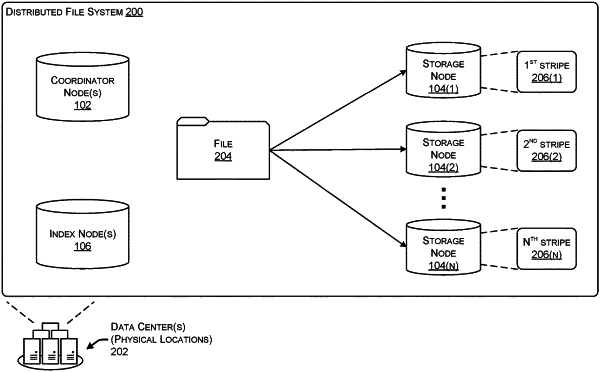| CPC G06F 11/1451 (2013.01) [G06F 16/178 (2019.01); G06F 16/182 (2019.01); G06F 2201/82 (2013.01)] | 20 Claims |

|
1. A method for generating a crash-consistent clone of a file associated with a virtual machine, the method comprising:
receiving, at a coordinator node of a distributed file system, a request to generate the crash-consistent clone of the file;
identifying, by the coordinator node, multiple storage nodes of the distributed file system that are storing different portions of data of the file, the multiple storage nodes including at least a first storage node storing a first portion of the data and a second storage node storing a second portion of the data;
sending, by the coordinator node, a first command to the multiple storage nodes, the first command configured to cause each one of the multiple storage nodes to:
quiesce the file,
wherein quiescing the file for the first storage node comprises:
waiting for a first index node (inode) associated with the first storage node to complete a first write operation that was acknowledged prior to receiving the first command, and
marking the first inode as quiesced based at least in part on a determination that the first write operation was completed,
wherein quiescing the file for the second storage node comprises:
waiting for a second inode associated with the second storage node to complete a second write operation that was acknowledged prior to receiving the first command, and
marking the second inode as quiesced based at least in part on a determination that the second write operation was completed; and
subsequent to each one of the multiple storage nodes quiescing the file, clone the different portions of the data to generate the crash-consistent clone of the file;
receiving, at the coordinator node and from the multiple storage nodes, a status associated with generating the crash-consistent clone of the file; and
based at least in part on the status, sending, by the coordinator node, a second command to the multiple storage nodes, the second command configured to cause each one of the multiple storage nodes to unquiesce the file.
|